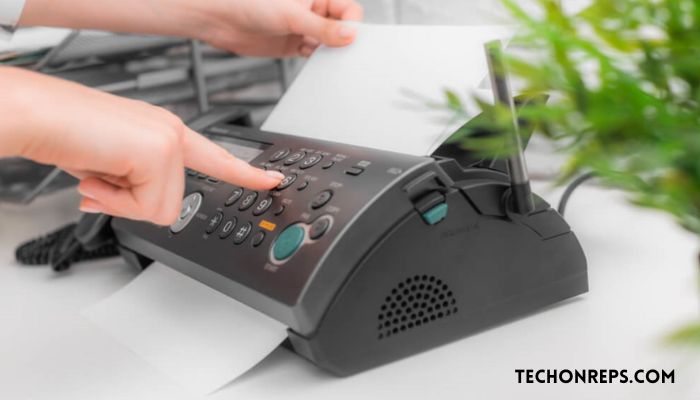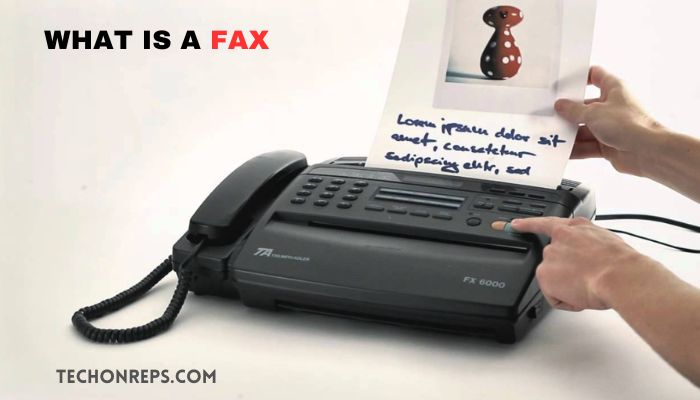What Is a Fax: The History and Evolution of Fax Technology?
Fax technology has been a staple in the world of communication for several decades. It has played a crucial role in transmitting documents and messages across long distances, revolutionizing the way businesses and individuals communicate. In this article, we will explore what is a fax and the history and evolution of fax technology, from its early days to its current state. We will also discuss the impact of fax machines on various industries and examine the challenges and future prospects of this technology.

The Early Days of Fax Technology: A Brief Overview
The concept of fax technology can be traced back to the 19th century when inventors began experimenting with ways to transmit images over long distances. The first fax machine, known as the “pantelegraph,” was invented by Italian physicist Giovanni Caselli in 1865. This early fax machine used a rotating drum and a stylus to scan and transmit images through telegraph lines.
However, early fax technology had its limitations. The transmission process was slow, and the quality of the images was often poor. Additionally, the machines were expensive and not widely available, limiting their use to a select few.
The Birth of the Modern Fax Machine: How it All Began
The modern fax machine as we know it today began to take shape in the mid-20th century. In 1948, a Scottish inventor named Alexander Bain developed a fax machine that used a rotating drum with metal pins to scan and transmit images. This invention laid the foundation for future advancements in fax technology.
In 1964, Xerox Corporation introduced the first commercial fax machine, known as the “Long Distance Xerography” (LDX). This machine used a combination of optical scanning and electrostatic printing to transmit documents over telephone lines. The LDX was a significant breakthrough in fax technology, as it made fax machines more accessible and affordable for businesses.
The Rise of Fax Machines in the 1980s: A Game-Changer for Business Communication
The 1980s marked a turning point for fax machines, as they became increasingly popular in the business world. The introduction of smaller and more affordable fax machines made it easier for businesses to adopt this technology. Fax machines quickly became an essential tool for transmitting documents, contracts, and other important information.
The impact of fax machines on business communication was significant. They allowed for faster and more efficient document transmission, eliminating the need for physical mail or courier services. This led to increased productivity and streamlined communication between businesses and their clients or partners.
The Emergence of Digital Fax Technology: From Analog to Digital
In the 1990s, digital fax technology began to emerge, replacing the traditional analog fax machines. Digital fax technology converted documents into digital signals that could be transmitted over computer networks or the internet. This innovation eliminated the need for physical fax machines and allowed for more efficient document transmission.
Digital fax technology offered several advantages over analog fax. It allowed for faster transmission speeds, improved image quality, and the ability to send and receive faxes directly from computers or mobile devices. Digital fax also eliminated the need for paper and ink, making it a more environmentally friendly option.
The Evolution of Fax Machines: From Thermal to Laser Printing
As technology continued to advance, so did fax machines. In the 1980s, thermal fax machines were introduced, which used heat-sensitive paper and thermal print heads to produce images. These machines were smaller, quieter, and faster than their predecessors.
In the 1990s, laser printing technology was incorporated into fax machines, further improving image quality and speed. Laser fax machines used a laser beam to create an electrostatic image on a drum, which was then transferred onto paper using toner. This technology revolutionized faxing by providing high-quality prints and faster transmission speeds.
The Impact of Fax Technology on Global Communication: A Historical Perspective
Fax machines played a crucial role in global communication, especially during significant historical events. For example, during the Cold War, fax machines were used to transmit diplomatic messages between countries. They provided a secure and efficient means of communication, allowing for the exchange of information without the need for physical couriers.
Fax machines also played a vital role in the news industry. Journalists and news organizations used fax machines to transmit breaking news and reports from remote locations. This allowed for real-time reporting and helped disseminate information quickly and efficiently.
The Role of Fax Machines in the Healthcare Industry: A Case Study
The healthcare industry has heavily relied on fax machines for many years. Fax machines are used to transmit medical records, prescriptions, lab results, and other important documents between healthcare providers. They provide a secure and efficient method of communication, ensuring that sensitive patient information is transmitted safely.
Despite advancements in digital communication, fax machines continue to be widely used in the healthcare industry. This is due to security and privacy concerns surrounding electronic transmission of medical information. Fax machines provide a paper trail and are considered more secure than email or other digital methods of communication.
The Future of Fax Technology: What Lies Ahead?
While fax technology has evolved significantly over the years, its future remains uncertain. With the rise of digital communication methods such as email and cloud-based document sharing, the use of traditional fax machines has declined. However, there are still industries and regions where fax machines are heavily relied upon.
In recent years, there has been a shift towards online fax services, which allow users to send and receive faxes through email or web-based platforms. These services offer the convenience of digital communication while still maintaining the security and reliability of traditional fax machines.
The Challenges of Fax Technology in the Digital Age: Security and Privacy Concerns
One of the main challenges facing fax technology in the digital age is security and privacy concerns. Traditional fax machines are vulnerable to interception, and there have been instances of sensitive information being accessed by unauthorized individuals. Additionally, the use of paper documents poses a risk of physical theft or loss.
To address these concerns, measures such as encryption and secure fax protocols have been implemented. Online fax services also offer enhanced security features, such as password protection and secure file transfer. However, it is essential for users to remain vigilant and take necessary precautions when transmitting sensitive information.
The Legacy of Fax Machines: Why They Still Matter in Today’s World
Despite the rise of digital communication methods, fax machines still hold relevance in certain industries and regions. In industries such as healthcare, legal, and finance, fax machines are considered a trusted and secure method of communication. They provide a paper trail and are often required for compliance with regulations.
Fax machines also continue to be used in regions where internet connectivity is limited or unreliable. In these areas, fax machines offer a reliable means of communication that does not rely on internet access.
Conclusion:
Fax technology has come a long way since its inception in the 19th century. From the early days of slow and limited transmission to the modern digital fax technology, this technology has revolutionized the way we communicate. While the use of traditional fax machines has declined in recent years, they still hold relevance in certain industries and regions.
As technology continues to advance, the future of fax machines remains uncertain. However, with the rise of online fax services and enhanced security measures, it is likely that fax technology will continue to evolve and adapt to the changing needs of businesses and individuals.



